On Monday, we introduced our special Football Outsiders "30 for 30," a look at the 30 best offenses of the past 30 years now that we have our advanced play-by-play metrics going all the way back to 1987. In this installment, we'll turn things around and look at the 30 highest-rated defenses.
Football Outsiders' DVOA (defense-adjusted value over average) metric accounts for every aspect of defense: how well teams prevent yardage, how often they get turnovers, and how well they keep points off the board. DVOA measures success on each play, defined using down and distance, then compares it to an NFL average baseline adjusted for situation and opponent. You can read more of the details here -- and yes, defensive DVOA adjusts for opposing offenses, not defenses, but we still call it DVOA. The metric is built to balance a measurement of how well a team has played in the past with a forecast of how well a team will play in the future.
Just like our list of top offenses, a couple of franchises really stand out as consistently great. Where the list of top offenses was dominated by San Francisco and New England, this list of top defenses is dominated by the AFC North rivals Baltimore and Pittsburgh. They combine to represent nine of the top 30 defenses since 1987.
You can find DVOA stats for all 30 seasons on the stats pages at Football Outsiders, but as we noted Monday, these stats will be a little different from those regular-season ratings. For the first time we've also added in postseason performance, boosting teams that went on strong championship runs and lowering teams that dominated the regular season only to trip over their own feet in the playoffs. Ratings each year are normalized, accounting for changes in the NFL's offensive environment over the past 30 years. It was certainly easier to keep quarterbacks contained in 1996 than it was in 2016.
Note: A negative defensive DVOA is good and 0 percent represents the league average, so a defense with a minus-30 percent DVOA rated 30 percent better than an average unit. Also, stats other than total defensive DVOA represent the regular season only unless noted. Special thanks to Jeremy Snyder, who did most of the transcription work on the late 1980s and early '90s.

30. 2004 Pittsburgh Steelers
-18.6 percent
Pittsburgh has ranked No. 1 in defensive DVOA five times, more than any other franchise during this 30-year time frame. This was not one of those years, as there will be two other teams from 2004 listed below, but this Steelers defense rates better than the No. 1 defenses they had in both 1993 and 1994.
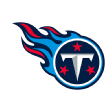
29. 2008 Tennessee Titans
-18.9 percent
This is how a team goes 13-3 with a 36-year-old Kerry Collins at quarterback. The Titans would rank even higher if they had not rested a number of starters in a meaningless 23-0 loss to Indianapolis in Week 17.
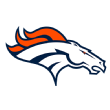
28. 2016 Denver Broncos
-19.0 percent
Last year's Broncos were even better against the pass than you probably think. Only two defenses in 2016 faced a tougher schedule of opposing offenses. Nine of Denver's games came against the top dozen teams in pass offensive DVOA, although the Broncos also get a bit of an artificial boost because one of those games was against Oakland's backup and third-string quarterbacks. The 2016 Broncos rank as the No. 12 pass defense of the past 30 years, but they get dragged down our rankings in overall defense because they were below average against the run.

27. 2010 Pittsburgh Steelers
-19.5 percent
A phenomenal run defense anchored by nose tackle Casey Hampton, the 2010 Steelers limited opposing runners to just over 3.0 yards per carry and ranked as the No. 8 run defense in DVOA history. The Steelers also ranked third against the pass that season, and both outside linebacker James Harrison and safety Troy Polamalu were first-team All-Pros.

26. 2004 Baltimore Ravens
-19.9 percent
Baltimore's defensive record over the past 20 years is just as impressive as the record in Pittsburgh. Since they moved to Baltimore in 1996, the Ravens have ranked No. 1 in defensive DVOA four times and No. 2 three other times. The 2004 Ravens defense limited Peyton Manning and Tom Brady to just one touchdown combined, but they lost both games because their offense was horrible.
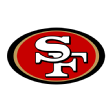
25. 1987 San Francisco 49ers
-19.9 percent
Football Outsiders stats for 1987 include only non-strike games, as if Weeks 4-6 of the season never happened. The 49ers had the best defensive DVOA during the regular season, but they fall behind the New York Giants because we're also including their 36-24 upset playoff loss to Minnesota.

24. 1987 New York Giants
-20.8 percent
The defending champion Giants were considered a massive disappointment in 1987, but their struggles were massively overblown -- in part because they went 0-3 with replacement players during the strike. The Giants were 6-6 with the regular roster, and Bill Belichick's defense was as spectacular as always, leading the NFL with 51 sacks.

23. 1999 Baltimore Ravens
-20.8 percent
The Ravens held opponents to just 4.06 average yards per play in 1999, the fourth-lowest figure since the expansion to a 16-game season in 1978. That's actually lower than the legendary 2000 Ravens defense (which allowed 4.29 yards per play). But overall, the 1999 Ravens weren't as good as the 2000 Ravens because they were just average in the red zone and forced a low number of fumbles.

22. 2008 Philadelphia Eagles
-20.9 percent
This was a peculiar season with really high standard deviation among defenses: four of them rank among the top 30 of the past 30 years, while another three (Detroit, Denver and St. Louis) rank among the bottom 30. This was a strong but fairly anonymous defense, with no All-Pros and only Asante Samuel and Brian Dawkins making the Pro Bowl.
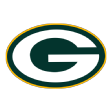
21. 1996 Green Bay Packers
-21.4 percent
There was more to this team than just Brett Favre, as the Packers held opponents to 10 points or fewer in nine of 16 regular-season games. Then they allowed just 16 points per game in the playoffs on their way to a Super Bowl victory. LeRoy Butler had his best season with 6.5 sacks, one of the highest totals ever for a defensive back, and five interceptions.

20. 1995 San Francisco 49ers
-21.6 percent
One-year rental Deion Sanders may have departed for rival Dallas, but the 49ers improved on defense the year after they won Super Bowl XXIX. Linebacker Ken Norton, cornerback Eric Davis and safety Merton Hanks were all first-team All-Pros. The 49ers led the NFL with 26 interceptions and limited opposing runners to just 3.0 yards per carry.

19. 1990 Pittsburgh Steelers
-21.6 percent
This Steelers defense was best at stopping the pass. They snagged 24 interceptions and allowed just nine passing touchdowns and a league-low 5.1 net yards per pass. The Steelers limited opponents to single-digit scoring six times. Unfortunately, their offense also was kept to single digits six times.

18. 2015 Carolina Panthers
-22.2 percent
The 2015 Panthers would be outside the top 30 if we included only the regular season, but they get a boost from shutting down the powerful Arizona Cardinals offense in the NFC Championship Game. Luke Kuechly, Thomas Davis and Josh Norman were all first-team All-Pros.
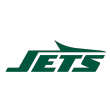
17. 2009 New York Jets
-22.7 percent
This was the year Darrelle Revis really became Revis Island, and the Jets' defense ranked No. 1 after falling to 15th the year before. They allowed just eight passing touchdowns and a completion rate of 51.7 percent, far below the NFL average of 60.9 percent. This Jets squad had the No. 5 pass defense DVOA of the past 30 years, and the best pass defense since 2002.
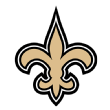
16. 1991 New Orleans Saints
-22.7 percent
This was the finest year for the Dome Patrol, New Orleans' linebacker corps that combined pass-rushers Rickey Jackson and Pat Swilling with USFL refugees Vaughan Johnson and Sam Mills. The Saints won their first-ever division title at 11-5, allowing fewer than 14 points per game with a league-leading 29 interceptions.

15. 1999 Tampa Bay Buccaneers
-23.8 percent
Much like last year's Denver Broncos, the 1999 Buccaneers were heavily slanted toward pass defense. DVOA ranks their run defense 23rd out of 31 teams that year, but their pass defense ranks 10th in the past 30 years. Warren Sapp, John Lynch and Derrick Brooks were all first-team All-Pros.

14. 1988 Minnesota Vikings
-24.5 percent
The Vikings had a fantastic pass defense in 1988, ranked fourth best since 1987. Opposing quarterbacks completed just 45.6 percent of their passes and threw 36 interceptions, a total no defense has matched since. Cornerback Carl Lee, safety Joey Browner and defensive tackle Keith Millard were all first-team All-Pros. Floyd Peters' defensive coaching staff included a young Pete Carroll and Monte Kiffin as position coaches.

13. 2003 Baltimore Ravens
-24.8 percent
In 2003, the Ravens had five games with at least four takeaways and another six games with three takeaways (including their 20-17 wild-card loss to Tennessee). They also allowed a league-low average of 4.23 yards per play.

12. 2006 Baltimore Ravens
-25.1 percent
This edition of the Ravens' defense led the league with 28 interceptions and was one of only five defenses since 1990 with 60 sacks in a season. Adalius Thomas and Ed Reed were first-team All-Pro, and four other Ravens defenders were named to the Pro Bowl.

11. 2000 Tennessee Titans
-25.3 percent
It was the 2000 Titans, not the famed Ravens unit, who led the NFL in defensive DVOA during the regular season. They were stronger against the pass, allowing 4.7 net yards per pass compared to 5.3 for Baltimore. In the final three games of the regular season, with playoff seeding on the line, they allowed three points -- total. The only team to score more than 21 points on Tennessee was the Ravens. They did it twice, and the second time ended the Titans' season in the playoffs.

10. 1991 Washington Redskins
-26.0 percent
The 1991 Super Bowl champion Redskins are better remembered for their offense than their defense; they didn't lead the league in any statistical categories because they had to compete with two other historically great defenses in New Orleans and Philadelphia. But they allowed just 4.9 net yards per pass and 3.9 yards per carry, and had three shutouts in the first five weeks of the season. They move up the list a few spots (and move past the Saints) because of a strong postseason performance.
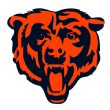
9. 2012 Chicago Bears
-26.8 percent
For nearly a decade, Lovie Smith's Bears had excellent defenses built around linebackers Brian Urlacher and Lance Briggs along with cornerback Charles Tillman. This was the last gasp of that multiyear run -- and surprisingly, according to DVOA, the best. The Bears led the league with 44 takeaways and were tied for fourth at 4.95 yards allowed per play, despite playing one of the 10 toughest defensive schedules in the league.
The next year, Urlacher retired and Briggs and Tillman combined to play just 17 games, and the Bears' defense plummeted from first to 25th in DVOA.

8. 2013 Seattle Seahawks
-27.4 percent
This Seahawks defense dominated all season, allowing a league-low 4.42 yards per play, but Seattle did it against the second-easiest schedule of any defense in the league. The opponents got harder in the postseason, but the Seahawks just kept dominating. They kept three of the top eight offenses of 2013 -- including Denver, one of the best offenses in NFL history -- to an average of 13.3 points.


7. 2008 Pittsburgh Steelers; 6. 2008 Baltimore Ravens
-27.6 percent; -27.9 percent
This was the pinnacle of the defensive rivalry that has defined the AFC North in the 21st century. Baltimore was No. 1 against the run and No. 2 against the pass. Pittsburgh was No. 2 against the run and No. 1 against the pass. The Steelers were the better defense during the regular season, and their average of 4.3 net yards allowed per pass is the best figure of any defense in the past 20 years. But the Ravens move slightly ahead once we consider the postseason because they shut down the Miami and Tennessee offenses in their first two playoff games. The Steelers had the last laugh, however, beating Baltimore 23-14 in the AFC Championship Game and then going on to win the Super Bowl. The All-Pro first team featured two Ravens (Ed Reed and Ray Lewis) and two Steelers (James Harrison and Troy Polamalu).

5. 2015 Denver Broncos
-28.3 percent
Unlike last year's Broncos, the Super Bowl champions were dominant against both the pass (No. 1 in DVOA with a league-leading 5.1 net yards allowed per pass) and the run (No. 4 in DVOA with a league-leading 3.3 yards allowed per carry). The Broncos put up these numbers against the fourth-toughest schedule of opposing offenses. Denver's issue wasn't too many games against the best offenses, but almost no games against bad offenses; Indianapolis and Cleveland were the Broncos' only opponents to rank 21st or lower in offensive DVOA. Then, like the 2013 Seahawks, they had to vanquish three of the top eight offenses in the playoffs on the way to the Lombardi trophy. Remarkably, Von Miller was the only player on this defense elected to the AP All-Pro first team.
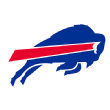
4. 2004 Buffalo Bills
-28.5 percent
The 2004 Bills were the best team of this century to miss the playoffs, ranking No. 1 in DVOA for both defense and special teams. They had one of the greatest defenses that almost nobody remembers. The Bills led the league with 39 takeaways and allowed a league-low 4.32 yards per play. They tied for third with 45 sacks even though Aaron Schobel (8.0) was the only player with more than five. In one absurd December game, they allowed Cleveland a grand total of 26 yards in a 37-7 victory. The Bills did this with a lineup that probably included no Hall of Famers, unless London Fletcher or Pat Williams sneaks in some day. The Bills would have entered the playoffs red-hot as long as they beat Pittsburgh in Week 17. The game was in Buffalo and the 14-1 Steelers were resting starters. The defense held Tommy Maddox to 120 passing yards but somehow let the Steelers hold onto the ball for nearly nine minutes with a 26-17 lead in the fourth quarter. The Steelers won 29-24, and the Bills missed their best chance at the postseason since the Music City Miracle.

3. 2000 Baltimore Ravens
-33.1 percent
We can look at the 2000 Ravens in two ways. We can acknowledge that many of the regular-season records they set came courtesy of one of the easiest defensive schedules in history. Or, we can focus on the fact that the Ravens are almost as superlative in Football Outsiders' advanced stats, even after we've adjusted for that super-easy schedule. The Ravens have the best run defense DVOA of all time, and they famously allowed only 2.7 yards per carry for the entire regular season. They had four shutouts and held opponents to 10 points or fewer in 11 of 16 regular-season games. But the Ravens really became legends in the playoffs, allowing just 23 total points in four games to Denver (No. 3 in offensive DVOA), Tennessee (No. 16), Oakland (No. 6) and the New York Giants (No. 8). That postseason performance moves the Ravens up from No. 12 to No. 3 on this list.

2. 2002 Tampa Bay Buccaneers
-36.7 percent
This is the best pass defense of the past 30 years. According to DVOA, the Bucs were 51.9 percent more efficient than the baseline during the regular season. They allowed 4.5 net yards per pass, the third-best figure of the past 20 years. They allowed opposing quarterbacks to complete just 51 percent of passes. They led the league with 31 interceptions, nearly double the league average of 16.5. They were at their best in the most important situations: No. 1 in the red zone, No. 1 in the second half of close games, and No. 3 against the pass on third downs. Defensive end Simeon Rice, defensive tackle Warren Sapp and linebacker Derrick Brooks were all selected as first-team All-Pros, with linebacker Shelton Quarles and safety John Lynch joining them in the Pro Bowl.
Similar to the 2000 Ravens, DVOA penalizes the Bucs for the easiest defensive schedule in the regular season, but they proved themselves further in the playoffs by shutting down two of the top three offenses in the league that year (No. 2 Oakland and No. 3 San Francisco, plus No. 10 Philadelphia). The Bucs don't reach the No. 1 spot of all time because they were "only" eighth in DVOA against the run, including a surprising 27th against the run on third downs.

1. 1991 Philadelphia Eagles
-42.4 percent
Looking at raw points scored and allowed can sometimes disguise the true strength of a defense because of problems on the other side of the ball. No team in modern NFL history exemplifies this quite like the 1991 Eagles. After Randall Cunningham tore an ACL 15 minutes into the first game of the season, the Eagles' offense collapsed. The defense spent the season constantly defending short fields. So while the Eagles gave up just 3.92 yards per play, the third-best figure since the move to a 16-game season in 1978, they finished fifth overall in points allowed in 1991.
Opposing quarterbacks completed just 44.1 percent of passes, the lowest rate for any defense since 1978. They led the NFL with 55 sacks and 43 forced fumbles. They finished third with 26 interceptions. And the defense wasn't one-dimensional: The Eagles allowed just 2.97 yards per carry on the ground, which ranks fifth since 1978. They put up these obscene numbers in standard stats despite playing the fourth-toughest defensive schedule in the league. Their division rivals finished first (Washington), fourth (Dallas) and sixth (New York) in offensive DVOA.
This was the late Buddy Ryan's defense, but without Ryan. He had been fired as head coach at the end of 1990. Rich Kotite was the head coach and Bud Carson the defensive coordinator. Three of the four defensive linemen were selected as first-team All-Pros: Reggie White, Jerome Brown and Clyde Simmons. Linebacker Seth Joyner and cornerback Eric Allen joined them in the Pro Bowl.
Unlike the 2000 Ravens and the 2002 Bucs, the 1991 Eagles didn't get to build a legend with a dominating Super Bowl victory. The team couldn't get enough out of Jeff Kemp, Brad Goebel and a 32-year-old Jim McMahon to even make it to the playoffs. Nonetheless, the 1991 Eagles were the best defense of the past 30 years.
